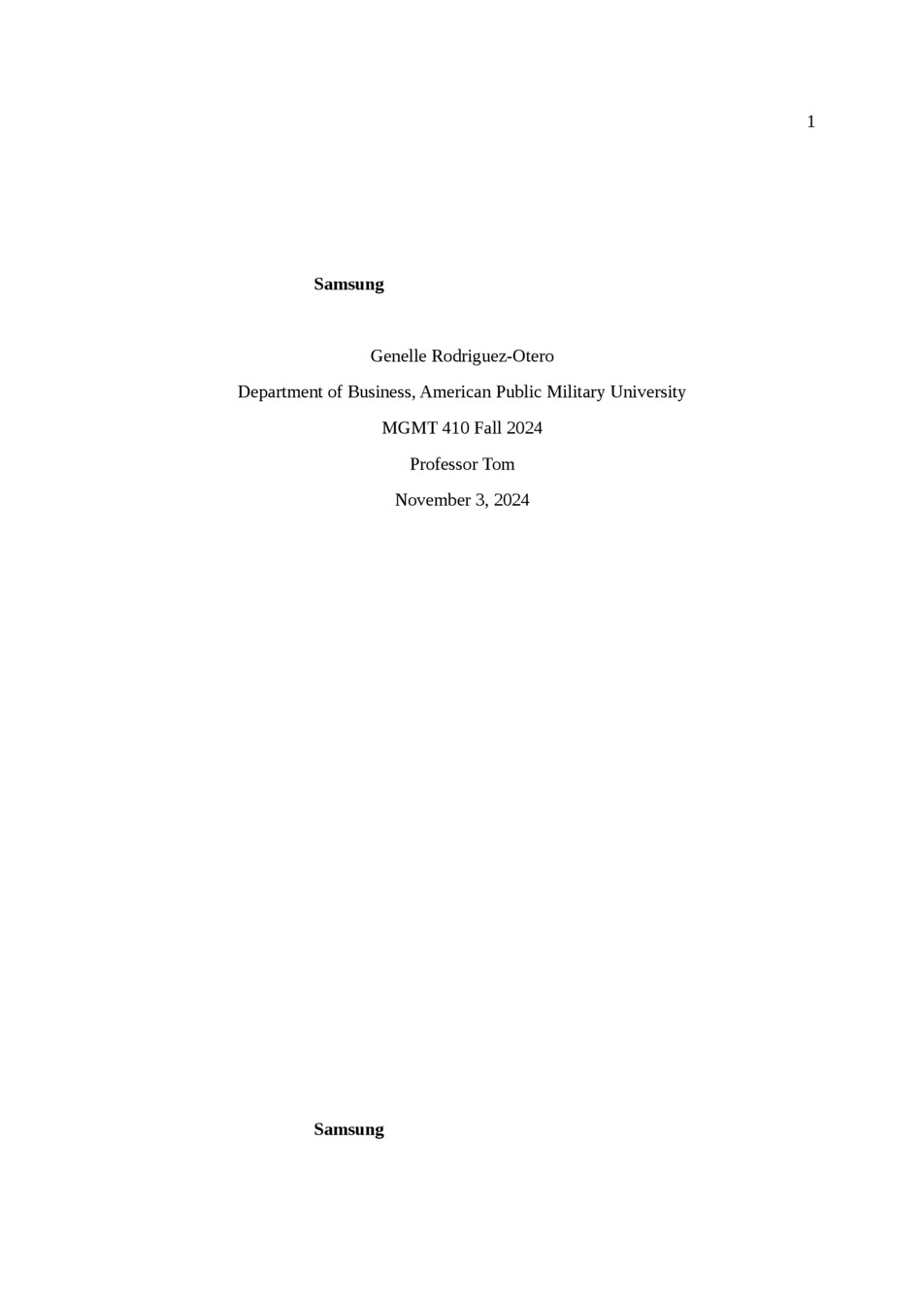Samsung Case Study
Samsung Case Study
Samsung Case Study
Summary:
Samsung, a multinational company founded in 1938 in Korea, has grown to become the world's largest manufacturer of electronic devices. The company's mission statement, business lifecycle, Pestel framework, Five Forces, Total Quality Management (TQM), and balanced scorecard have been crucial in propelling Samsung to its leading position in the tech industry.
Starting as a grocery trading company, Samsung's mission statement focused on creating superior products and services, which led to their success in the tech industry through innovation and quality. The company's lifecycle saw growth through the introduction of cutting-edge technology products, gaining customer loyalty, and facing challenges such as competition from Apple.
The Pestel framework analysis revealed the impact of political, economic, social, technological, environmental, and legal factors on Samsung's business operations. The Five Forces model highlighted Samsung's competitive advantages, customer and supplier bargaining power, competitive rivalry, and strategies for maintaining market position.
Samsung's Total Quality Management approach emphasizes continuous improvement, quality leadership, employee motivation, and customer feedback to ensure high standards and innovation. The balanced scorecard methodology helps Samsung monitor financial performance, customer focus, product quality, and organizational culture for sustained success in the tech industry.
Overall, Samsung's strategic use of various resources and strategies, aligned with its mission statement, has enabled the company to thrive and maintain a leading position in the competitive tech industry.

